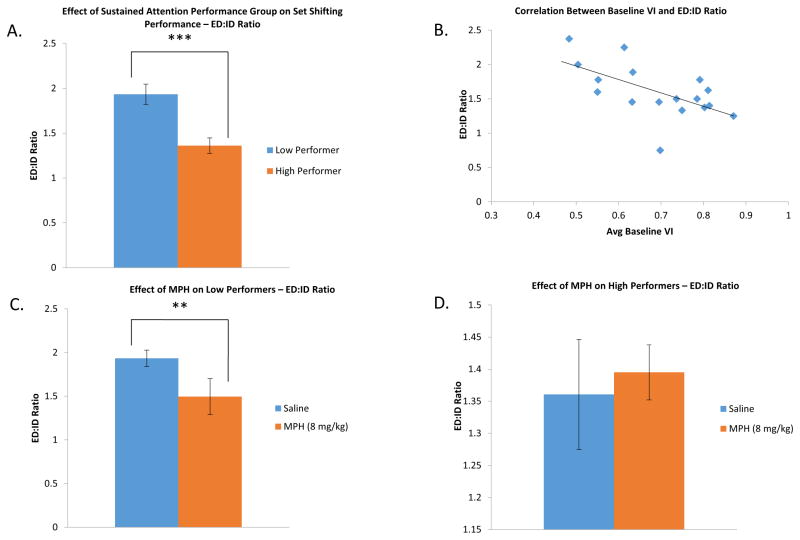Figure 6.
Effect of performance in the sustained attention task and MPH on the ratio of ED to ID trials to criteria. Comparing the trials to criteria in the ED shift compared to the number of trials in the ID shift is one way to compare performance in the set shifting task between groups. A lower value in this metric indicates greater behavioral flexibility. Overall, there was a significant decrease in the ED:ID ratio following treatment with MPH [F(1,21)=14.877, p<0.001]. A. The effect of performance group on ED to ID ratio. The high performance group showed greater behavioral flexibility compared to the low performance group [F(1,21)=14.877, p<0.001]. B. Baseline performance in the sustained attention task negatively correlated with performance in the set shifting task (rs=−0.751, p<0.001 indicating animals with better vigilance have better behavioral flexibility. C. The effect of MPH on ED to ID ratio in the low performance group. There was a significant decrease in the ratio of ED to ID trials to criteria in the animals with a low baseline level of performance in the sustained attention task, indicating a significant drug-mediated increase in behavioral flexibility [t(11)=3.286, p<0.01]. D. The effect of MPH on the ED to ID ratio of the high performance group. MPH did not significantly change the ratio of trials to criteria [t(10)=−0.344, p=0.738]. Even though there was an increase in the number of trials to criteria with MPH, there was a parallel increase in the trials to criteria in the intra-dimensional stage that mitigated the relative effect of the increase in the trials to criteria in the extra-dimensional stage.

